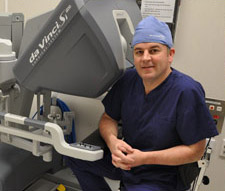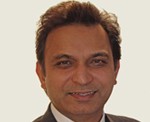Twitter: my #eurekamoment #pennydrops #babyvomit
 I remember distinctly when the penny dropped for me. It was about 2am on a warm summer’s night in early January 2012 (apologies to those of you shivering in the Northern Hemisphere). I had my one-week old son in one arm, swinging between sleeping and spewing, and an iPad in my other hand, providing distraction between nappy changes and feeds. The sleep-deprivation had dulled my senses considerably and my brain was capable of no more than light reading.
I remember distinctly when the penny dropped for me. It was about 2am on a warm summer’s night in early January 2012 (apologies to those of you shivering in the Northern Hemisphere). I had my one-week old son in one arm, swinging between sleeping and spewing, and an iPad in my other hand, providing distraction between nappy changes and feeds. The sleep-deprivation had dulled my senses considerably and my brain was capable of no more than light reading.
It was then I read a piece in the New York Times online about the power of Twitter in medical communication. Previously, I thought Twitter was the domain of Lady Gaga, Justin Bieber, Kim Kardashian (Kim who?) and various narcissistic cricket and football players. It seemed like puerile nonsense for a generation that I no longer belonged to. However, reading this opinion piece made me think again. It was clear that there is a whole generation of significant academic clinicians, researchers and publishers who have embraced social media and who use Twitter, in particular, to disseminate their work with a speed and reach that is simply unachievable through any other medium. I was struck by various examples of how key scientific publications are first flagged on Twitter and how within hours, responses are made by key opinion leaders and these responses are again disseminated rapidly around the Twittersphere. And although none of the examples were based around urology, it was clear to me that oncologists and surgeons were getting on board the social media rollercoaster.
So between nappy changes and having wiped some baby vomit off my iPad, I logged onto Twitter and created a username. I searched for prostate cancer and urology and quickly found my way to a few key resources and super-users who seemed to have a very active Twitter presence and who were tweeting content that immediately appeared of interest to me. Within a few minutes I had identified a few highly valuable Twitter users to follow and within their lists of followers and those who they were following, I quickly built up a useful stream of tweets dropping into my timeline. And then of course, a few of these Twitterers started following me back, which was mildly exciting. Within a few days and having posted a few tweaks, I began to feel part of the Twittersphere.
As the weeks went by, I continued to be astounded by just how fast information travels on Twitter. While I get emails with the table of contents for the various journals that I subscribe to, these only drop in my inbox every few weeks. Also, because there are a number of significant journals that I do not subscribe to (non-urological mostly), there are many papers published out there that do not come immediately to my attention. Depending on which Twitter sites you follow, all key papers related to your area of interest find their way into your timeline instantaneously as soon as they are published. Not just that, very interesting comment from others also gets to you very quickly. For example, key findings in prostate cancer tend to be picked up by the major US news sites who then invite comment from key leaders in major cancer centres. A typical example is that of the PSA screening recommendations made by the United States Preventive Services Taskforce in June 2012, which provoked huge controversy. Twitter came to life and key opinion leaders such as Matt Cooperberg (@cooperberg_ucsf) helped drive the conversation through Twitter and blogs (e.g.The Huffington Post blog) at lightning speed. These comments get tweeted out and responses to these comments also get blogged and within hours of a paper being published you have news of the paper, expert comment and wider reaction…… all in 140 characters or less!
And while none of us have much time in the day to add an extra task, I find that waiting for my coffee in the morning or while the resident puts an arterial line in my next patient, there are a few spare moments in the day where the Twitter app on my iPhone comes to life. Twitter is perfectly suited to the smart phone user and that is where the majority of tweets around the world are generated from. It is also perfectly suited for one of the other very exciting areas in which I have seen Twitter play a very useful role – that of conferencing. At the EAU in Paris, a small but energetic group of Twitter users started tweeting content from various sessions at this large meeting and started engaging with other Twitter users around the world. For me, I believe conferencing is about to be transformed by the power of social media but more about that soon.
For now, at the new BJUI, we want to grow the audience and get you all to join the conversation. Through Twitter, blogging, Facebook, YouTube and other social media platforms, we are building for the future of communication in urology. The next generation of trainees will be deeply embedded in all of these platforms and will expect to be engaged through them. We are entering a new generation of medical communication – come join the conversation.
Declan Murphy
@declangmurphy
Declan Murphy is Honorary Clinical Associate Professor at the Department of Surgery, University of Melbourne, St Vincent’s Hospital and Director of Robotic Surgery at the Peter MacCallum Cancer Centre. He had previously been consultant urological surgeon at Guys & St Thomas’ NHS Foundation Trust in London.
Comments on this blog are now closed.




I shared the same initial cynicism about Twitter before I came on board. I first signed up a couple of years ago and because I did not understand the medium, almost immediately abandoned my use of it. To be honest, I made only a cursory attempt to learn about how it all worked. When the Australian and New Zealand Urogenital and Prostate Cancer Trials Group (ANZUP) held its ASM in July 2012, I thought that as a Board Director, I should do whatever possible to help promote the meeting. I live tweeted at the meeting and soon discovered yourself tweeting away at full throttle – the amplification effect of a few tweets and the discussion it created simply amazed me. In early August 2012, there was the Australian Prostate Cancer Conference where you had instituted scrolling live tweets on monitors, a Twitter help desk to assist new users signing up, a designated hashtag and Social Media Liaison Officers – this was absolutely groundbreaking for a urological conference. The Twitter discussion that arose as a consequence of this conference attracted international attention and like many who joined twitter for the first time at that conference, I was convinced of its value as a useful modern day CME tool. Twitter is the ideal social media tool for time poor surgeons in that messages are succinct and very much to the point yet at the same time engaging and informative. Hope to see more urologists come on board. Well done in bringing BJUI to world through social media.
Thank you to @declangmurphy for getting me involved in urological twitter. I was also a skeptic until I attended the Australasian Prostate Cancer Conference in August 2012. It was amazing how quickly the proceedings from the meeting could be disseminated around the world. Similarly, it is a great way for busy clinicians to find out a “sound byte” about the lastest research findings, and to engage in debate with international opinion leaders. This is the way of the future, and congratulations to @BJUIjournal for leading the way.
Thanks Stacy. It would be great to have you blog for us. Maybe tell us how you combine a monstrous publication track record with clinical practice in New York and a radio show!!
@declangmurphy you’ve certainly been a driving force behind the expansion of the Urological twittersphere. In particular the innovative thinking as mentioned by @DrHWoo and @LoebStacy at the Australasian Prostate Cancer Conference 2012 has set the bar high for future conferences world-wide. I have taken great satisfaction watching my co-residents go into Peter MacCallum Cancer Centre Urology unit social media naïve and leave with a twitter account organised in hootsuite, boasting their Klout score and vowing to marry a robot! – “The force is strong with this one!”